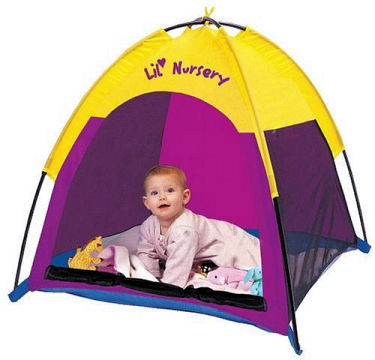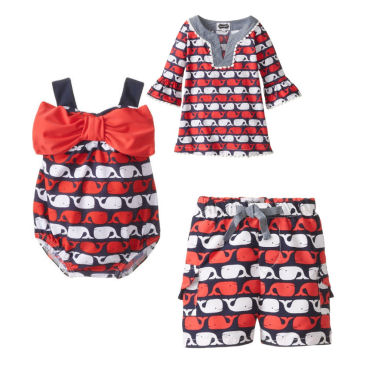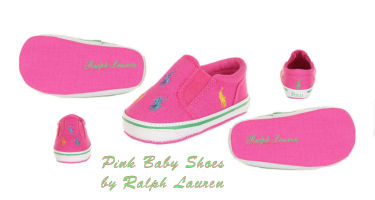Essentials Checklist and Tips for Taking Baby to the Beach
We have an essentials checklist and tips for taking baby to the beach including answers to all the common questions new moms and dads have about spending a day of fun in the sun and sand making memories with a little one that is a year old or less. Parents look forward to their first trip to the lake or ocean as a family with great anticipation but may have questions as to what is needed to keep their baby safe.
One of the most common questions that they ask is how old does a baby have to be before they can go to the beach.Perhaps the reason that so many are confused on this issue is because there is no definitive answer. It is safe to say that most agree that spending the day at the beach would be ill advised for an infant less than 3 months old but is any point past three months old acceptable?
Is Taking Baby to the Beach at 3 Months Old Safe?
One of the reasons that all agree that taking an infant that is less than three months old to the beach is a bad idea is due to the fact that sunscreen, one of the most important tools in a parent's kit of baby sun protection is not recommended for use for a child under six months of age.

Go here to get more details
If there is one fact that I would hope everyone reading these FAQs absorbs it is that sunscreen, lots of it and the right kind of sunscreen, is essential for a baby that is about to spend time out of doors.
When CAN I Take Baby to the Beach
Since the answer to this question depends on the weather and the length and conditions of your getaway as much as the age and health of your baby you should always ask your pediatrician first!
Beach Weather Conditions - Why Parents Should Always Be Aware of the Temperature
It is crucial to be aware of the temperature even when your pediatric advisor gives the go-ahead as a baby's body temp can heat up quickly even when protected under a sun shade or inside a beach tent.
What Kind of Baby Sun Protection is Best?
For babies over six months, the first line of defense is the one that will be closest to his or her skin; sunscreen but not just "any" sunscreen will do.
All babies and toddlers should be kept inside and out of the sun between the hours of 11am and 3pm when the sun is at its strongest is highly recommended. In fact, those hours are a good time for all humans to be indoors. Plan for an early lunch and a time of rest afterwards before venturing back out to play awhile.
A little while before taking baby to the beach and before dressing your child in his or her baby swimsuit, apply a thick layer of sunscreen to every bit of skin not covered by protective clothing or a baby hat, including those tiny hands and feet. Plan to re-apply the lotion or cream every few hours and immediately after your baby has played in water even if the sunscreen's packing indicates that it is waterproof.
What to Look for in a Baby Sunscreen
Use a product that has been specially formulated for babies and young children, with an SPF (short for sun protection factor) of at least 30 and a broad-spectrum brand with a four or five star rating. Check the package to be certain that the sunscreen provides both UVA and UVB protection.
Baby Beach Accessories and Gear
The needs of a child at the beach, where there is most likely a lack of natural shade, are quite different than those when going shopping or sightseeing at a museum. The gear for those outings, beyond a lightweight umbrella stroller, could easily be packed in a diaper bag. In addition to sunscreen, protective clothing and a sun hat, beach accessories and gear that should be on your checklist include:
- •A UV treated sun tent to provide shade when needed while at the beach and a stroller sun shade or baby car seat carrier cover for protection between the car and the beach.
- A windscreen that will protect both you and your child from a breeze that may be too brisk for comfort.
- A baby beach blanket, which is not a blanket that would be used for bedding, but one that is sturdier, waterproof and of a heavier weight that won't allow sand to sift through the weave.
- Lots and lots of towels that can be used to dry off, as a portable changing area or any number of uses.
- Formula and feeding equipment for non-breastfed babies or a nursing cover for discreet breastfeeding.
- A first-aid kit and any prescription medications that may be needed throughout the day
Other items that may be enjoyable when taking baby to the beach during the crawling or toddler stage include:
- Swim Diapers
- Beach Toys (a bucket, shovel, inflatable ball)
Baby Beach Clothes

Baby Swimsuits are the first thing that comes to mind to pack when taking baby to the beach and a cute one is always nice but hold on; you will need more than a bikini or a pair of swim trunks.
As we know nights near the water can be chilly and even more so when our hair, clothing and towels are still damp from swimming. Mom will need to pack some pants and a long-sleeved shirt in addition to the protective UV clothes and sun hat to prevent baby from being too cool in the shade during the day or after the sun sets.
Baby Shoes for the Beach

Baby Shoes
will be needed to protect a crawler's and toddler's feet from hot sand and sharp objects.Hopefully, you have better luck than I do in getting your children to wear a sun hat and sunglasses. I always pack them even though my kids usually took them off as quickly as I put them on. My girls dealt with the cute jelly sandals that I bought to match their swimsuits the same way.
How to Stop My Baby from Putting Sand and Rocks in Her Mouth at the Beach
One of my girls evidently thought sand was sugar and had to either be carried or corralled inside her sun tent to prevent her from filling her mouth with pebbles and sand. I did my best to make sure she was not hungry and make snacks handy at all times but it was a constant battle. I am happy to report that the small amount of sand that she managed to sneak by me apparently did no harm and that she outgrew her taste for it. You may have better luck than I did and any tips for taking baby to the beach and keeping sand off of the menu are welcomed and much appreciated here at Unique Baby Gear Ideas.
How to Breastfeed on the Beach
Taking baby to the beach and breastfeeding on the beach is much easier than formula feeding. There are no bottles to deal with or formulas to manage; simply unpack your nursing cover, position baby and lunch is served! If you do not own a nursing cover you might look for a private area out of the sun and sight of prying eyes (if you prefer privacy rather than nursing in public) and feed your child.
How to Keep My Baby Safe at the Beach
HERE are some excellent tips for keeping your baby as well as yourself and your family safe when spending the day at the beach.
When you click on links to various merchants on this site and make a purchase, this can result in this site earning a commission. Affiliate programs and affiliations include, but are not limited to, the eBay Partner Network and Amazon Affiliate Program such as the ones to your left on this page and others. Please see our Affiliate Disclosure page for more information.
More UBGI: Rss Feed |
Unique Baby Gear Ideas advises everyone to never use drop side baby cribs. It is illegal to buy, sell or use a drop side crib. If you own a drop side crib, please disassemble it and dispose of it at the local city or county waste dump.

New! Comments
I would love to know what you think of our site! Leave me a comment in the box below.